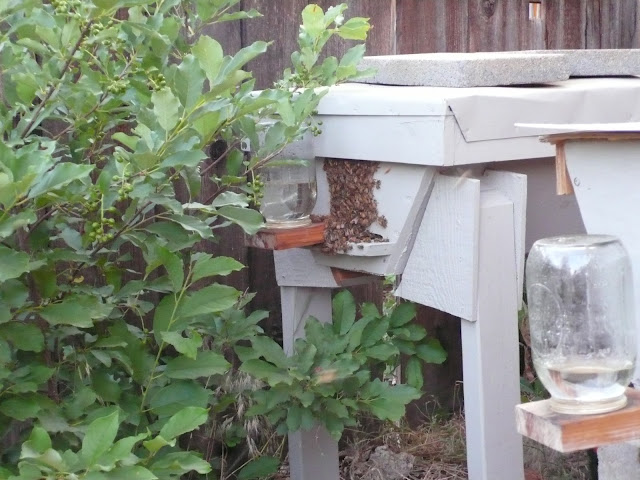I've got a spot where I planted tomatoes, last year, that didn't do well. I think it was the classic case of planting too soon after applying manure. The tomatoes mostly burnt up in June, so I planted cover crop plants in their place. After all I couldn't leave it bare. The first "cover crop" I planted was nematode control marigolds from Burpee I read that they can help control bind weed if the plants are dug back into the ground after grown. I am not sure if that experiment was successful or not. Last year it got really hot in early July 100+ F for several / many days in a row. I think that killed the marigold seeds that had germinated. I did get marigolds but I think it was different seeds that germinated after the big heat passed. And the disturbing but expected outcome there is still bindweed to beat the band. While the marigolds were growing near the front of the bed, I planted alternating rows of hairy vetch, fava beans, and oats behind them. The fava and oats sprouted and the hairy vetch came in a little later in the fall. The oats and fava winter killed (froze) and the hairy vetch went dormant until spring, when it came back to life. Fast forward to late June and here we are.
Bumble bees like hairy vetch. The flowers are shaped similar to snap dragon blooms so honey bees have a hard time forcing open the flowers to get at the nectar, where it seems the larger bumble bees can force their way in. Hairy vetch is a legume, meaning it forms root nodules with symbiotic bacteria to fix nitrogen from the air. When the plant is turned in this nitrogen becomes available to the next plants. Although the vetch looks daunting to clear, it is actually pretty easy. I simply start at one side ripping it out of the ground by hand and rolling it up as I go. As I mentioned there is still bindweed mixed in so I wanted do as much damage it its roots as possible. I have done this by hand with a turning fork, but even this small area would take many hours to get done using that method. I do have a secret weapon that works wonders.
Six horsepower of magic. I've read that tilling disrupts the soil organisms, earthworms and the like, but I'm hoping they recover faster than the bindweed.
So here it is after being tilled. My drip irrigation just pivots out of the way. You can see the big round ball of hairy vetch at the top of the walkway.
Here is what it ended up like. Fencing bent into semi circles for the cukes to grow up. I use 4 ft pieces of rebar to stake the fence in. I used the hairy vetch as mulch around the cucumber seeds, Seeds of Change Marketmore cucumbers. I used the pine tree branches in a teepee fashion as a trellis for yard long beans (see March "Magic Beans" post. The I moved the sprinklers back in place and watered everything in well with the hose.
It was hot work. I did this after work about 7pm till dark (~9pm) the temps are in the high 80's still and the mosquitoes are out in force. My saucer full of water dries every second day, bone dry so I think the mosquitoes are living and breeding in the soil.
Here is an update picture from Aug 25, 2013.
 |
| Aug 25, 2013 |
The cukes are taking over, I planted them too close to one another (too many seeds). They are producing very well, but its hard to get in to pick them.
The yardlong beans really didn't do too well. I picked my first pair of bean pods Sept. 18th.
Here is a picture of the girls bearding while I was finishing up. They do this to keep cooler, its cooler outside than inside the hive. The bottom of my hives are covered in 1/8" screen, but otherwise completely open. The only opening is a 1/2" slot near the bottom of the beard.
 |
| Hive #1 |
 |
| Hive #2 |




No comments:
Post a Comment